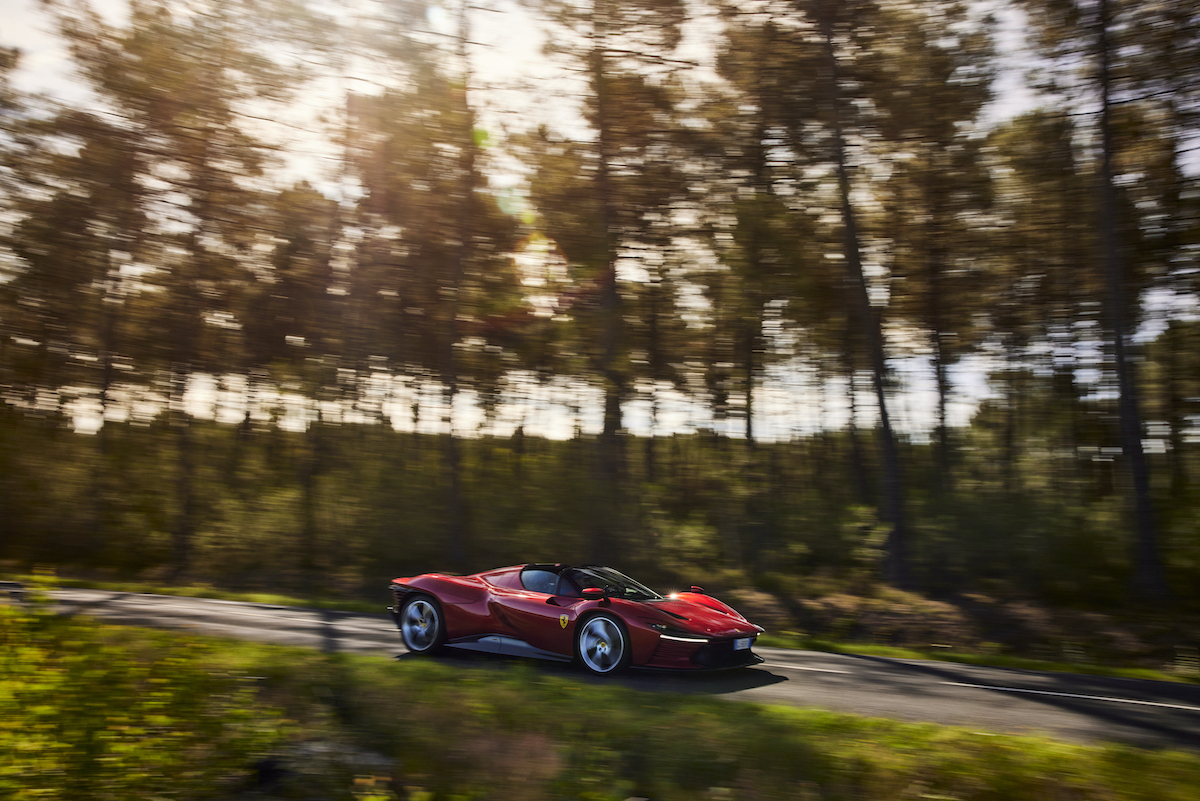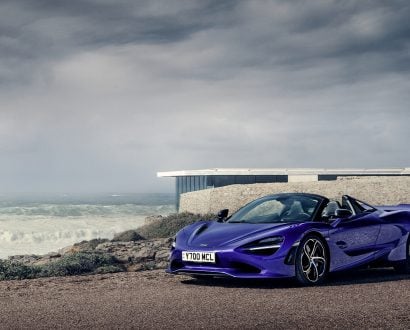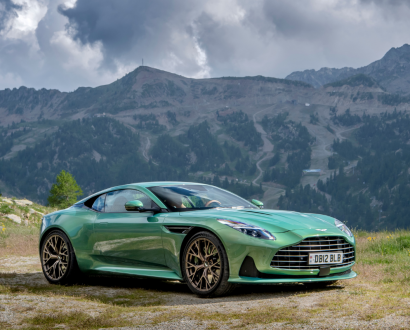There are two kinds of people who don’t look at price tags – those wealthy enough not to care, and those trying to avoid a nasty scare.
It’s fair to say that not finding out that the Ferrari Daytona SP3 I flew to Le Mans in France to drive cost around US$2.57 million dollars until after I’d returned it in one precious piece, was an act of calculated cowardice.
Sure, I did my research on this incredibly exclusive collector piece – just 599 will be made and it’s part of the Ferrari Icona series, with this particular model representing the company’s incredible racing successes in the 60s and 70s (if you love the film Ford v Ferrari, this car is for you), but I was very careful not to look at the price.
Even driving it with an imagined price – I had guessed it had to be over a million, perhaps as high as US$1 million – was intimidating.
And then I saw the Daytona in the flesh and realised that when the chief designer, Flavio Manzoni, declared that he was trying to create a work of automotive art, “a true sculpture, visually sensual and also dynamic”, he was not exaggerating.
Unique and unforgettable

This visually intense Ferrari has already won awards for its design, taking out the Grand Prize for Most Beautiful Supercar 2022 at the Paris Festival Automobile International – but you truly have to see it in the mad, muscular fresh to appreciate just how unique and unforgettable it looks.
Manzoni’s goal was to create a vehicle that someone will look at 30 years from now, make a low whistle of appreciation and declare it as truly one of the iconic cars of the 2020s.
In many ways, it may also be the last of its kind because the Daytona features a 6.5-litre V12 engine, a dinosaur in car-evolutionary terms, but one that’s going out with a glorious, riotous roar.
In another sure sign of just how special this car is, that V12 just happens to be the most powerful naturally aspirated engine Ferrari has ever let loose on the streets.
It makes 618 kilowatts at an almost unimaginably deafening 9,250 rotations per minute and 697 Newton metres. It can hit 100 kilometres per hour in just 2.85 seconds, or 200 kilometres per hour in just 7.4, with a top speed of 340 kilometres per hour.
It is fast, it is loud and it is also absolutely cutting edge in its tech, with a full carbon-fibre chassis – the company’s first since its hypercar La Ferrari – and various parts, including barge board-like aero features and carbon bits around the exhaust, and even in the engine, that are lifted straight from its F1 cars.
Modern, classic design
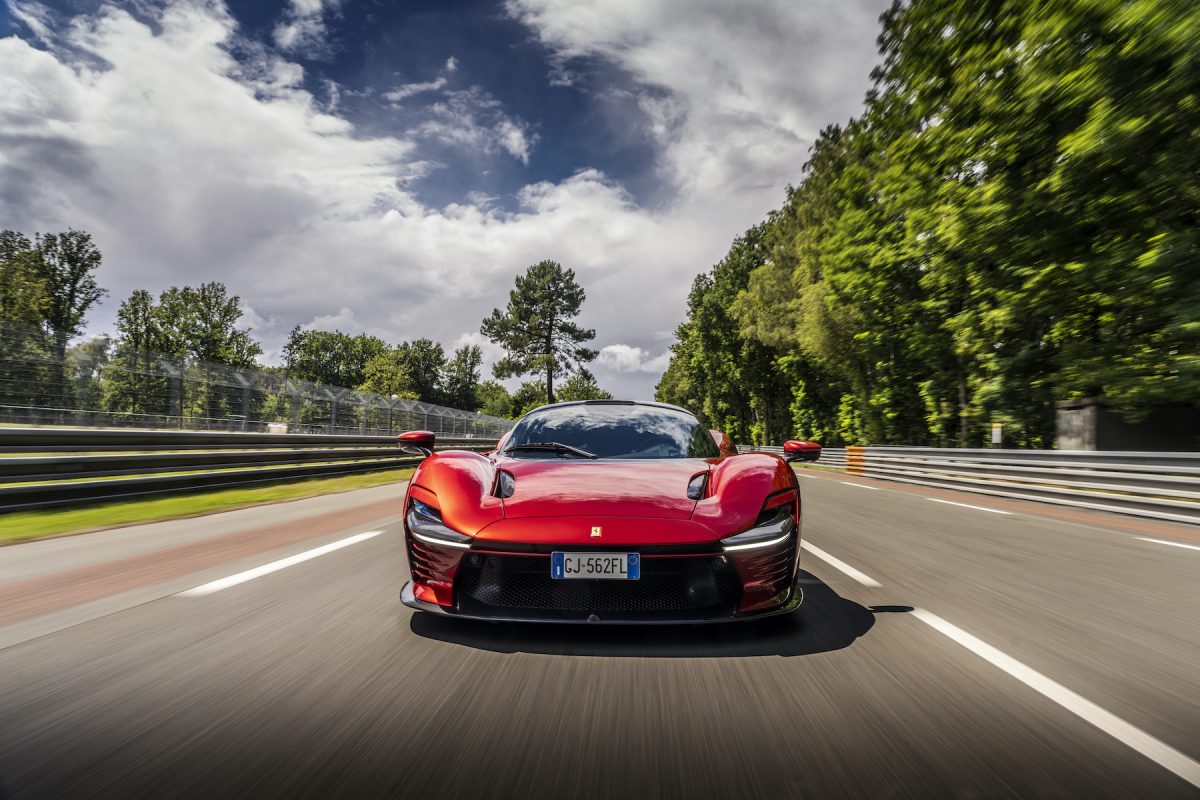
All those bits you can’t see are amazing, but it’s the design you keep coming back to.
In a nod to pop-up headlights of the past, the Daytona effectively has eyelids, or eyelashes, that slide open alluringly when night falls, which means that during the day it doesn’t look like it really has headlights at all.
It also has wing mirrors way out in front of you that help make a very wide vehicle even wider, so much so that there’s a button to tuck them in, should you be worried an oncoming vehicle is going to remove them.
And it has gorgeous, horizontal strakes, particularly at its staggeringly modern yet classic rear, that are a nod to Ferraris of the past, like the Testarossa, yet somehow manage to look even cooler.
Honestly, the idea that you are going to be allowed to drive something as artistic as the Daytona feels almost as intimidating as the price.
It already feels like a museum piece, as if you’ve been asked to take a seat at the table in The Last Supper and to take that table for a spin.
And yet, as one Ferrari test driver put it, “If we were making this car just to sit in a museum, we wouldn’t have gone to the trouble of developing tyres specifically for it; it’s meant to be driven.”
Limitless acceleration
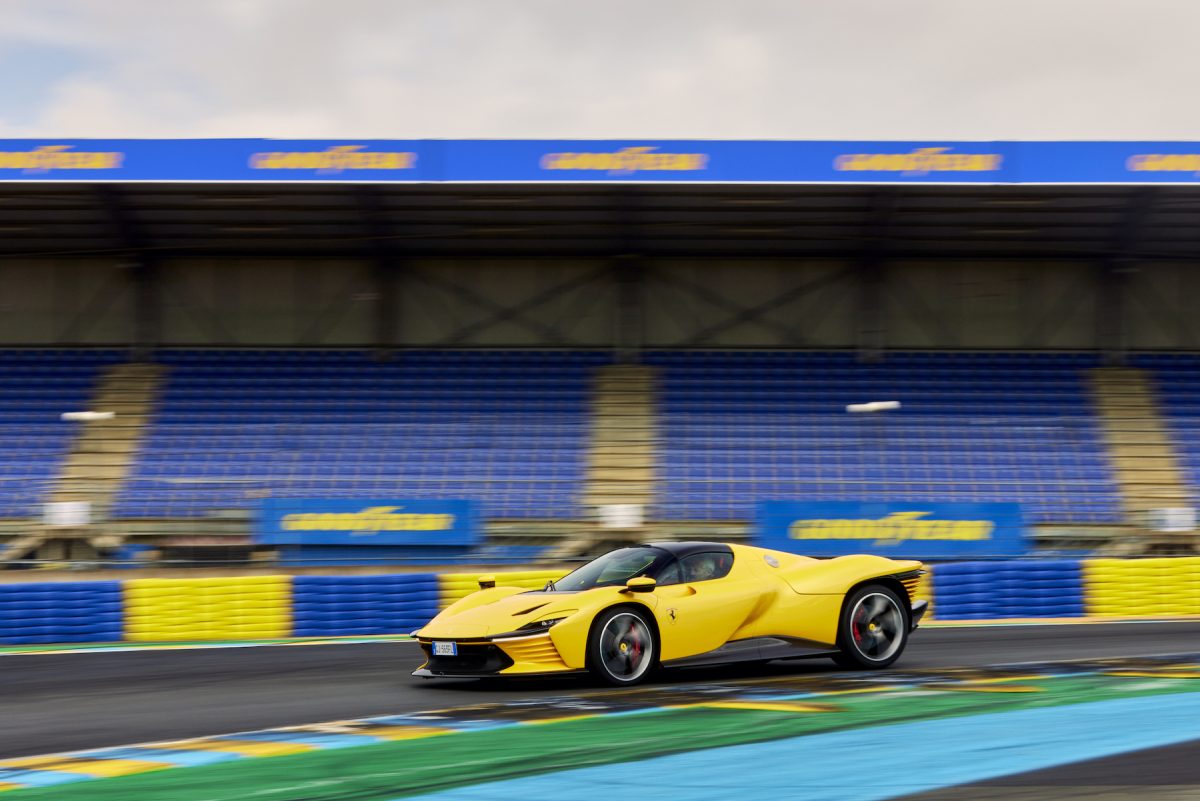
Almost above that, it’s meant to be heard and felt, because a V12 that can rev beyond 9,000 rotations per minute is something deeply moving indeed.
“It is something very special – it cannot be described, it can only be felt,” the test driver added. He then went on to attempt to describe it anyway, as an “endless crescendo that gives a feeling of limitless acceleration”.
Climbing into the cabin of the Daytona is not easy – the seats are just pieces of colourful foam attached to the chassis, so you don’t have any adjustment; instead, you move the pedal box to suit your feet.
Vision out of the car is also limited – you can’t see a thing beside you or over your shoulders, and the windscreen is tiny and wraparound, like a Le Mans racer, which is what this car effectively is.
It’s also where Ferrari chose to launch the Daytona, on the legendary Le Mans circuit, which sounded exciting at first – the track has a six-kilometre-long straight that would seem like a good place to explore the rare air above 300 kilometres per hour.
However, we were told that the cars were too valuable for us to attack a track with, so we just tootled around having our photos taken instead.
Sensory-overload driving
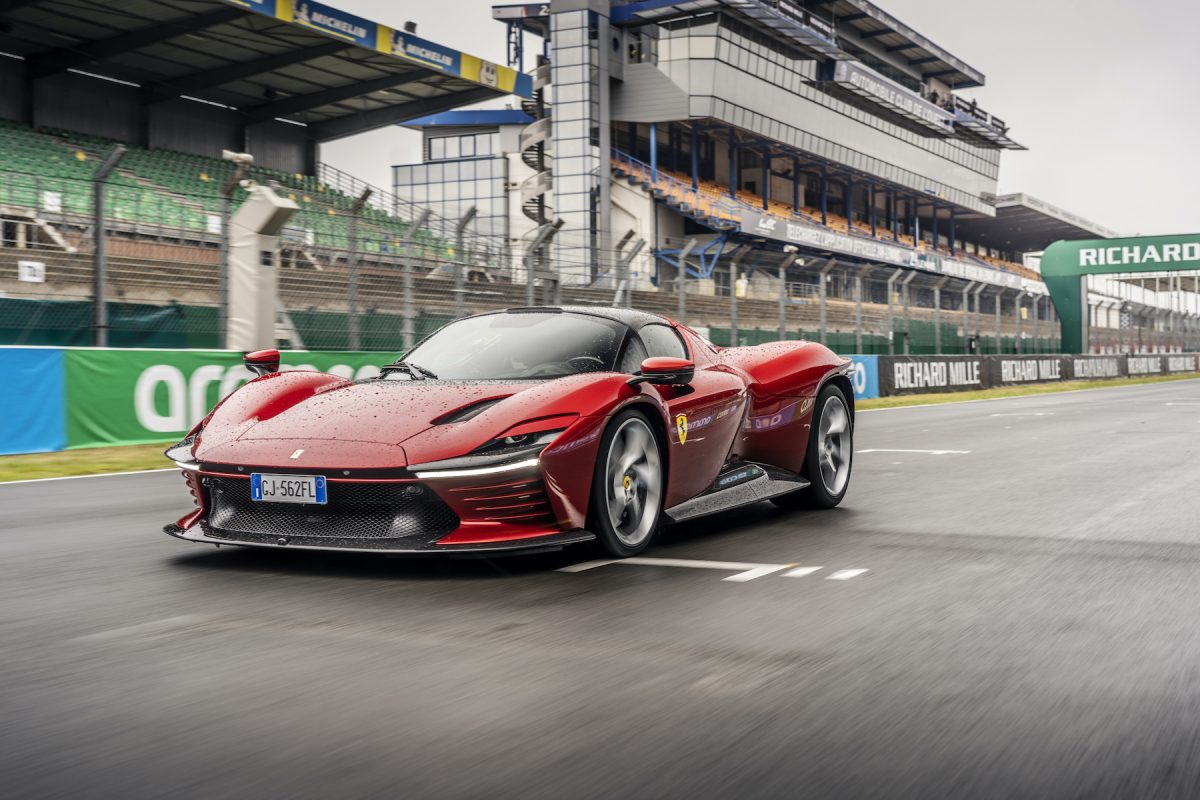
After that, incredibly, we were sent out onto public roads to risk it all for a few hours of unforgettable, sensory-overload driving.
At first, on rough and broken roads, the Daytona SP3 felt like a race car that was struggling to come to terms with how awful, hard and uneven the real world can be.
Putting your foot down on a bumpy surface was a leap of faith, as the car leaped and clattered and skittered, and my heart rate hit a level best described as cardiac arrest.
But then we reached a few stretches of perfect, smooth tarmac and the Daytona delivered all that you would expect from a US$2.57 million Ferrari.
The engineers say its carbon chassis is designed to give you a “pure, unfiltered sensation of the road surface, to allow you to control the car better”, and it’s certainly unfiltered.
Rocks clatter into the undercarriage and it seems as though there’s no sound deadening at all. The car is stiff and immovable but also nailed to the road.
And that lack of any filter between you and that incredible, stratospheric V12 engine is a great gift.
Smash your way up through the gears, rev each one out as high and as hard as you dare, and you are rewarded with a metallic operatic sound experience that is simply beyond compare.
An exhilarating drive
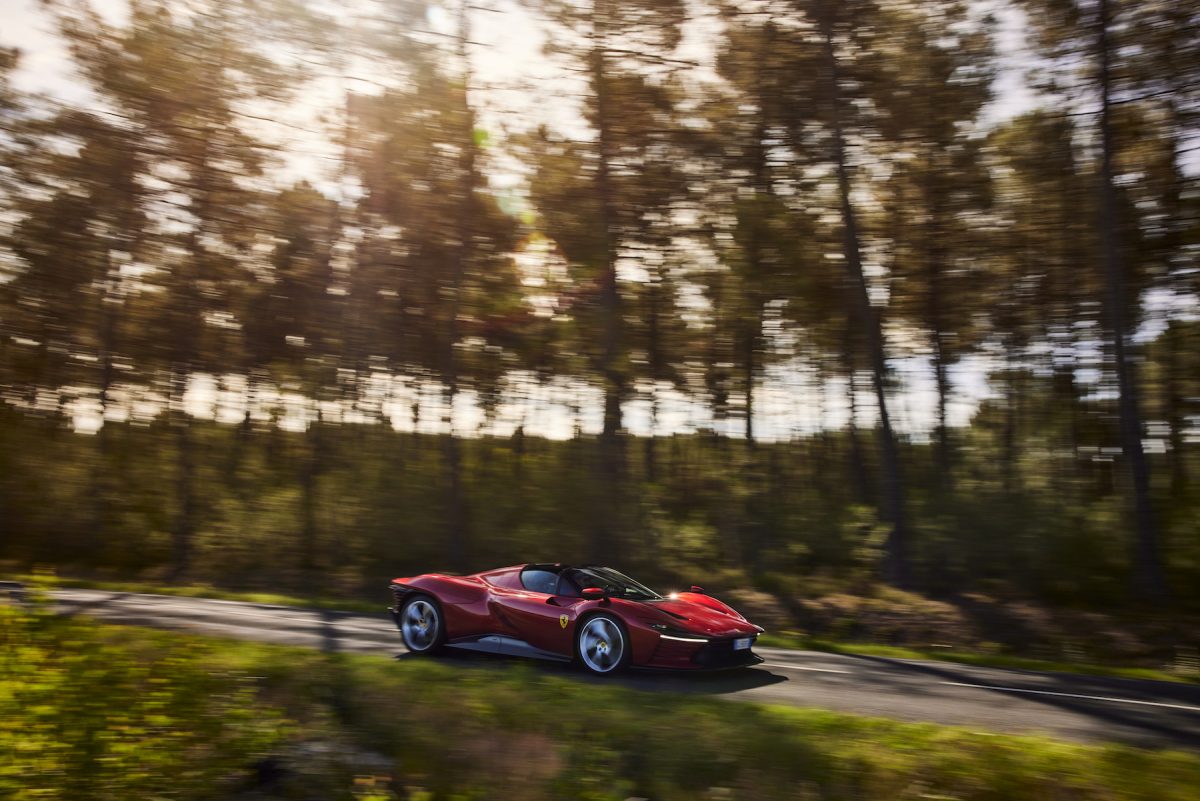
After a while, I forgot how expensive this Ferrari obviously was and just kept slamming my foot to the floor (well, almost the floor – I was on public roads) because my ears were just enjoying the experience too much and I knew it would never come again.
The Daytona is firm but fair, providing fantastic feedback through both the steering wheel and the seat of your pants. You really do feel connected to the road and capable of great feats of speed and corner carving.
But it does feel wide, particularly on French roads, and wild as well. I can’t say I ever got to the point where I felt relaxed driving the Daytona, but I certainly felt absolutely and thrillingly alive.
Somewhere out there are 599 very happy customers who have slapped down their millions to own one of these rare and ridiculous cars – yes, all of them are already sold.
I do wonder if they looked at the price tag, or if they just saw a photo of the Ferrari Daytona SP3 and thought, “I must have one of those.” I get it, I really do.

